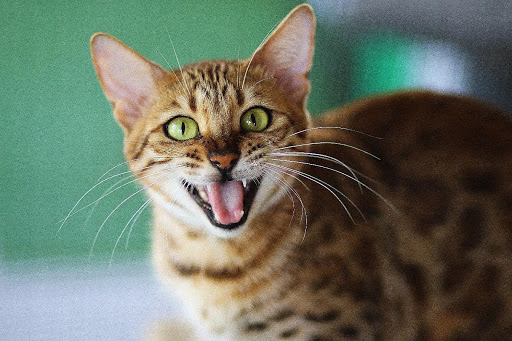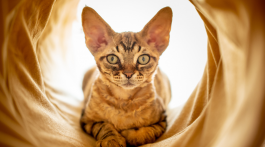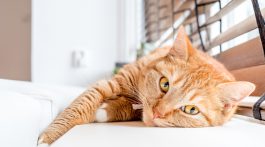Understanding cat behaviour and what cats get up to and why they do things can often be a mystery. Only in knowing the particular behaviours of your cat can you understand what they are doing or going through.
While it could be a challenge to include everything in this post, we will try and cover the main things you come across on a daily basis. Just remember that your cat loves you and will more likely be looking at you for attention or protection.
Tail Movements
Cats often use their tails to signify what they are feeling, and you can tell a lot from the way they hold their tail. These are some signs to look out for:
- Up high – happiness and content. This cat is confident in their area; if they flick the end, they are particularly happy.
- Low down – aggression. This cat can be on the hunt, or just signalling to not bother them.
- Tucked away – fearful. Something has made the cat unsure and anxious; they may look to you for comfort.
- Puffed out – frightened or threatened. Cats will puff out their tails to appear bigger, often seen when a cat runs into a larger animal unexpectedly.
- Swishing slowly – focussed or ready to strike. This cat has seen something they’d like to chase or pounce on.
- Swishing fast – fear or aggression. It is best to avoid a cat exhibiting this behaviour, as they may strike at any moment.
- Question mark shaped – playfulness. A cat doing this is showing that they are in a loving and playful mood.
Meowing
Adult cats do not communicate with each other by meowing, but instead it is used solely to get attention from humans. Kittens will meow to get their mothers attention. But, fully grown cats only communicate with each other using their olfactory senses (scents).
When a cat is meowing, it is seeking attention from you. It may be a request to go outside or past their mealtime, or they may be hurt and need assistance. Cats have a special relationship with their human companions and have developed this way of ‘talking’ to us.
Purring
Purring used to be thought of as a sign of happiness and contentment, but studies have shown that this is not always the case. In fact, cats purr for a variety of reasons ranging from relaxed to fearful. It is best to use the purring sign in conjunction with other behaviours to figure out what your cat is trying to communicate.
Rubbing
When cats are rubbing against you or another object, they are transferring their scent. While it could be considered that the cat is marking you as an object they own, more commonly it is a sign of affection. It’s also a great way to get your attention!




No Comment